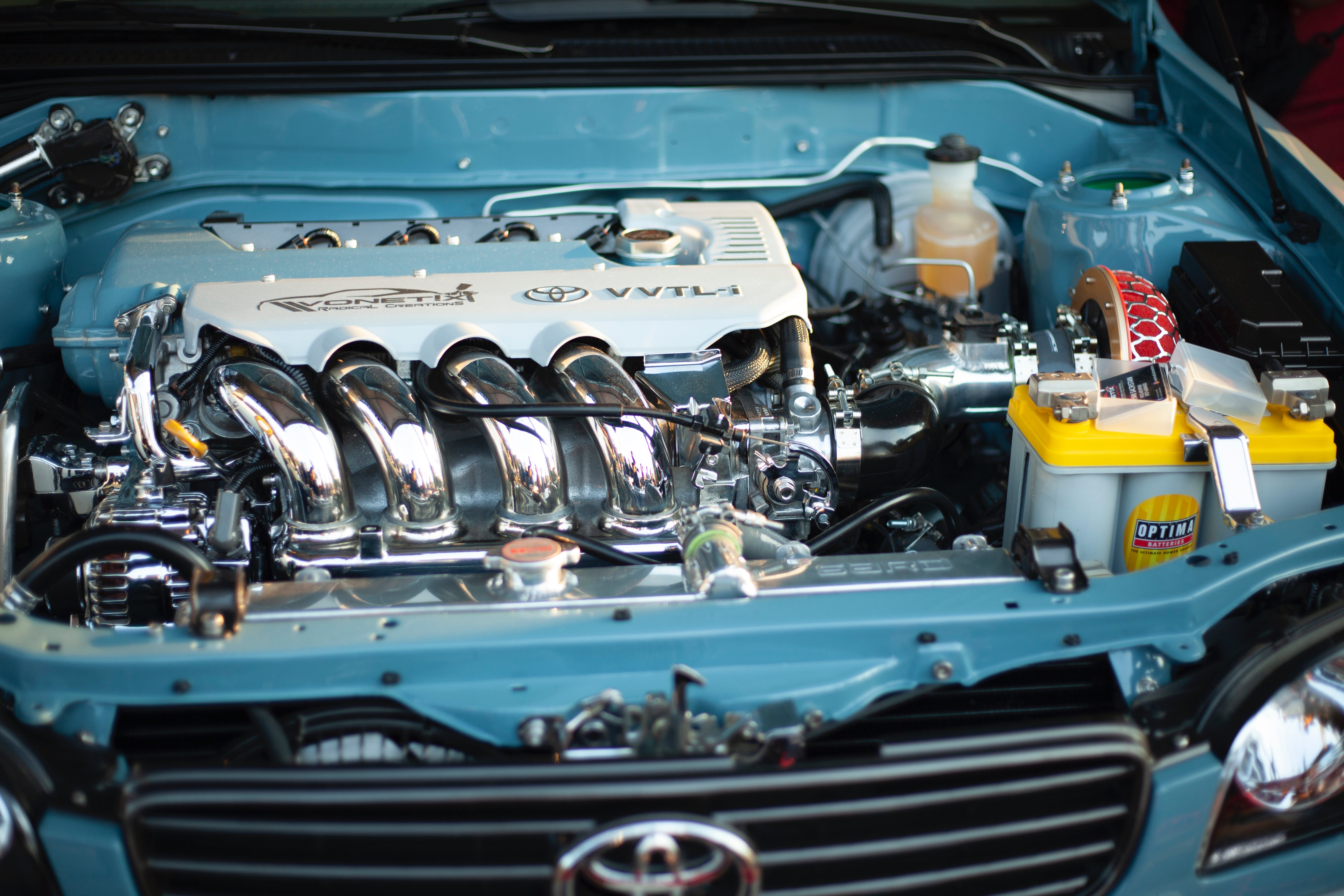
Table of contents
Introduction
Cold air intakes are at the top of many enthusiast’s mod lists. They are seen as a performance and aesthetic upgrade to any car. Cold air intakes are seen at any auto parts store and are easily found online in a range of prices. But do they actually work? The short answer: it depends. In this segment of the Powershift Auto Blog, We will go over cold air intakes, why they may or may not be used in a build, and if it’s worth the money.
What Is A Cold Air Intake?
A cold air intake is a combination of an intake pipe, filter, and sometimes a box around the filter with the goal of drawing cooler air into an engine. On the cheaper side, the intake system is a simple pipe from the intake manifold (or to the turbocharger if you have one) with a filter attached to it. However, more expensive intakes include boxes protecting the filter from heat generated by the engine bay. One of my favorite performance-oriented cold air intake setups are ones utilizing the bumper to get the intake as far away from the engine as possible.
For example, my Acura CL had an AEM cold air intake that was positioned right behind the factory fog lights. To modify it further, I purchased the 2003 model fog light inserts that simply fill the void from removing the headlight. From there, I cut the driver’s side fog light insert and replaced part of it with metal mesh. This allowed for the intake to be as close to the outside air as possible.
What Is The Purpose Of A Cold Air Intake?
The goal of a cold air intake is to have the coldest air possible enter the engine. Colder air is denser, which means it contains more oxygen volume per unit. More oxygen in the engine allows you the mix in more fuel and create more power. Along with that, the intake system may reduce turbulence that is common in factory intake systems. Manufacturers have to reduce noise in their cars. To accomplish this, the intake systems will contain sound deadening sections that may reduce air flow in order to keep the noise down.
Lastly, cold air intakes bring in beautiful induction sounds. Like an aftermarket exhaust, cold air intakes add to the overall enjoyment of the car by increasing sound. While it sounds cheesy and immature to want a car to be louder, trust me, engine sounds are an amazing thing.
Types of Intake Modifications
Car owners modify the intake system in a handful of ways. Some owners simply replace the factory paper filter with a reusable cloth filter such as K&N or AEM. Others will replace the entire system to try and achieve maximum air flow. All of these options range in different budgets, starting as low as $30 to almost $400.
1. Replace Factory Filter with Reusable Filter
Changing the factory air filter with a K&N, Spectre, or AEM filter is very common amongst enthusiasts. The factory air box prevents heat from getting to your new filter and the new filter allows for more induction noise. However, replacing the filter alone may not result in any performance increases.
2. Keep Factory Air Box and Replace Intake Tube
AEM and other companies sell aftermarket intake tubes that utilize the factory air box. This is a budget-friendly modification that allows for a better flowing intake. In my experience, I did this with my Chevy Silverado and felt like it was a good alternative to a full cold air intake.
3. Replace Entire System With Cold Air Intake
Personally, I have purchased a couple cold air intakes and had good results with them. The J32 engine in my Acura CL benefits from intake modifications and has an awesome induction sound when VTEC engaged. On the turbocharger side of things, my Focus ST’s Roush Cold Air Intake worked well with the tunes from JST.
Complete systems range around $200 to $400 depending on manufacturer and the type of car you have. Please note that these are not always 50-state legal. Refer to your local laws regarding vehicle modifications or visit K&N and review their FAQ regarding their products.
4. Custom “Ram-Air” System
Back in the day, companies like Pontiac had “Ram-Air” intake systems. The idea was to position the intake on the front of the car to force the coldest air into the car. Some classic car owners copy this by removing the middle factory lights and installing hoses that connect to the intake. This is an old-school drag racing trick that is still popular.
Today, you will see track cars replicate this by installing intakes where a headlight would be. Alternatively, some cars like the Ford Mustang or Dodge Challenger can sport a “shaker hood”. These modifications are typically more expensive if you want them to look good.
Naturally Aspirated Cars and Cold Air Intakes
When building a naturally aspirated car, the solution to power is more air and more fuel. A cold air intake can aid in this, but it will typically not yield much in terms of power by itself. However, if you combine this with exhaust modifications, a larger intake manifold, and a larger throttle body, you will see some great performance gains after a solid tune.
Fortunately, the modification itself is not too expensive so if you want to do it before you install other parts, it will work perfectly for you.
Forced Induction and Cold Air Intakes
Having the coldest air possible for a car with forced induction is huge. The goal of forced induction is increasing the volume of air going into the engine, so why not make it even better with colder, denser air? As we highlighted in our forced induction guide, having denser air allows for you to increase boost and maintain consistently cold air inlet temperatures.
While the new system may not be a standalone improvement, retuning your car for the addition of the intake makes a noticeable difference. I added the Roush intake with my Mountune intercooler and it was an impressive improvement in performance. My inlet temperatures were consistently low.
Honestly, the best part of an air intake with a turbocharged car is definitely the increased sound. The spooling of the turbocharger combined with the intake sound is incredible and addicting.
So Is It Worth It?
Is a cold air intake worth it? Unfortunately, the answer is it really depends. For most cars, simply installing one without any type of tuning won’t give you much in terms of performance. Mighty Car Mods showed this in their video where they used a Nissan Skyline to test different intake setups. Their video explains performance differences through dyno results and changing different variables.
However, with a proper tune, an aftermarket intake can be a useful mod for your car. I loved the cold air intakes I had on my Acura and the Focus ST and would buy them again.
Go over your car and what you want to achieve with it. If all out power is your goal, remember that by itself a cold air intake is not the answer. However, it is a piece to the puzzle that will aid in the overall goal of more power.
Conclusion
Cold air intakes continue to be a popular modification in the car world. While the marketing behind cold air intakes may be fluff, there is merit to installing one. Consult your tuner or your forums and see if upgrading the intake is a good move for your car. Regardless of which route you take, remember that modifying the engine is all about getting the parts to work together. Take the time to research parts for your car and get it right the first time.
Want to have your vehicle featured on our website? Contact us on our website, Pinterest, or Instagram!
*For any modification, we recommend you consult a trained professional before trying to modify a car on your own.

Keep up with the latest articles, content, and special offerings by signing up for our email newsletter!
